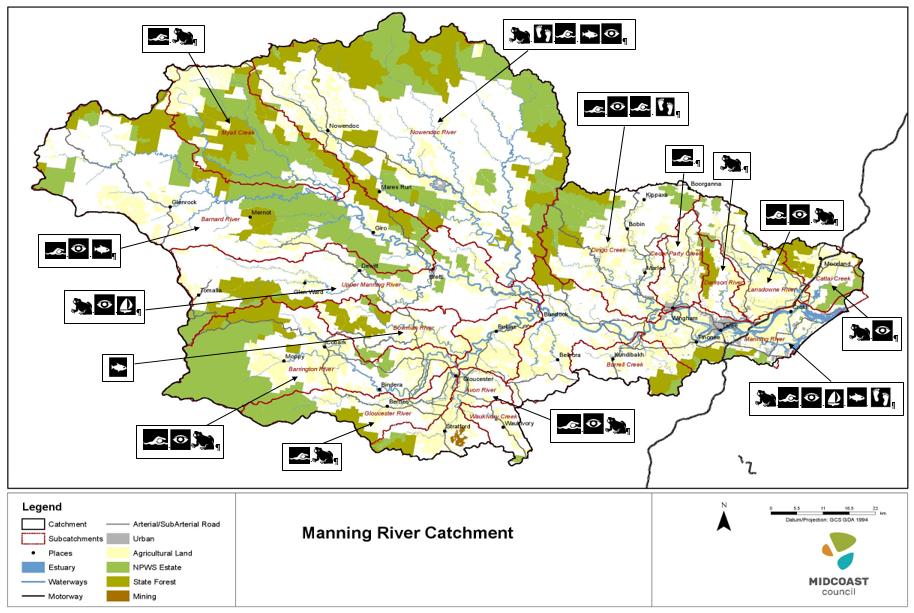11.1 MERI for the Manning River, Estuary and Catchment MidCoast Council will implement a broadscale environmental monitoring, evaluation, reporting and improvement (MERI) program to support the management objectives of the ECMP. The MERI Program will provide a high-level assessment of environmental quality to ensure the values in Section 2 are maintained across the Manning River Estuary and Catchment. Implementing the MERI Program will assist Council and our stakeholders to establish a baseline of data characterising water quality including ecological health. Continued long-term monitoring will enable us to detect changes (positive or negative) in water quality over time. Analysing the data will aid decision-making and adaptive management, helping us to improve the program and achieve our objectives. The MERI Program constitutes the science program defined in the CMP Program Logic Model (see Section 3.4). 11.1.1 Principles The MERI Plan adopts the following Principles: •
Uses SMART Objectives – Specific, Measurable, Achievable, Realistic, Timebound.
•
Relies on an agreed program logic – robust methodology to ensure outcomes can be effectively measured.
•
Uses Best Practice - current best practice and scientific knowledge and multiple (environmental indicator) lines of evidence.
•
Adopts a risk-based approach – assists MidCoast Council to prioritise monitoring of ecological responses and stressors that pose the highest risk to ecological health.
•
Emphasises collaboration – builds on existing programs to improve efficiency and reduce duplication in effort.
•
Transparent reporting – offers open access to information.
•
Adaptive Management – adopts a systematic approach to improving natural resource management by learning from management outcomes and making changes to improve the ecological response and reduce stressors.
•
Values cultural knowledge – recognises the importance of cultural knowledge holders in increasing understanding of the condition and health of the Manning River Estuary and Catchment and the influence environmental change may have on physical and non-physical elements of cultural heritage.
•
Values local knowledge – recognises the value of local knowledge in understanding and interpreting scientific results about the heath and condition of the Manning River Estuary and Catchment.
•
Values citizen science – recognises the role of citizen science programs in filling knowledge gaps and increasing understanding of the condition and health of the Manning River Estuary and Catchment.
Manning River ECMP Exhibition Draft V2 June 2021
Page 136






















